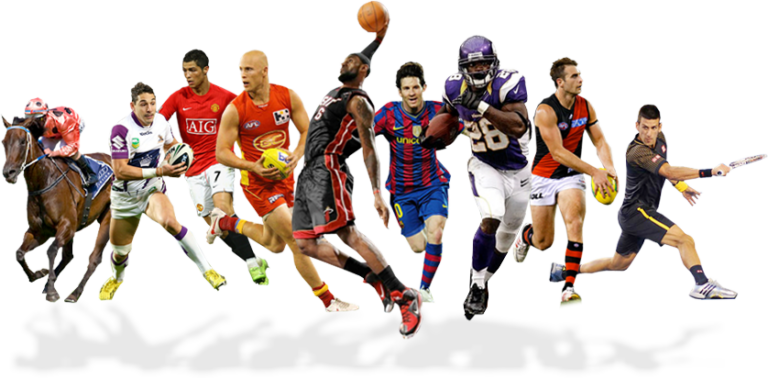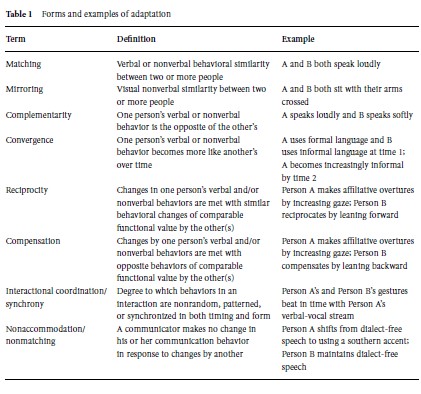Stereotyping of Workers
Stereotypes are beliefs about the characteristics of a group of people, which lead to expectations about what individual members of...
Read More
Strategic Human Resource Management (SHRM)
Organizational strategy refers to the overall positioning and competitive approach of an organization in the marketplace. Strategic management is the...
Read More
Stress at Work
Stress is an experience that disrupts a person’s emotional and physical state, such as having too much work that causes...
Read More
Technology and Careers
Over four decades ago, Alvin Toffler predicted that our society would be affected by the Information Revolution due to technology...
Read More
Telecommuting
Telecommuting is a flexible work arrangement in which organizational employees work from an alternate location, usually the home. This variant...
Read More
360° Feedback
The use of 360° feedback (also called multirater or multisource feedback, full-circle appraisal, and group performance review) became highly popular...
Read More
Toxic Leadership
Toxic leadership exists in virtually every arena of social life. It takes a special toll, however, in the workplace, where...
Read More
Training and Development
Training and development (T&D) activities identify and ensure, through planned learning programs, the development of key competencies that enable individuals...
Read More
Tuition Reimbursement
Tuition reimbursement is a popular benefit in which employers pay all or part of an employee’s tuition for college courses...
Read More
Ralph Linton
Ralph Linton was an American cultural anthropologist known for his academic bravado and popular appeal, as well as for his...
Read More
Konrad Lorenz
Konrad Lorenz was a founder of ethology, the biological study of animal behavior. Ethologists study animals in natural and seminatural...
Read More
Llano Culture
Llano culture refers to late Pleistocene North American people on the Llano Estacado, or Southern High Plains, who used distinctive...
Read More
C. Owen Lovejoy
Most of us, at one time in our lives, have probably wondered how we came about and what our ancestral...
Read More
Lucy Reconstruction Models
Lucy is among the most famous fossil skeletons believed to represent an early stage of hominid evolution following separation of...
Read More
Charles Lyell
Charles Lyell was born in Kinnordy, Forfarshire, Scotland, on November 14, 1797, the eldest of 10 children. His father guided...
Read More
Best Practices in Identification Tests
Perhaps the ultimate form of eyewitness evidence is the identification of a suspect from a live or photo lineup, as...
Read More
Juries and Insanity Defense
The insanity defense is one of the most controversial legal defenses in the U.S. legal system, as demonstrated through the...
Read More
Insanity Defense Reform Act (IDRA)
The Insanity Defense Reform Act (IDRA), passed by Congress in 1984, imposed a uniform standard for legal insanity that applies...
Read More
Institutionalization and Deinstitutionalization
As recently as the mid-20th century, the U.S. public mental health system consisted largely of the state hospitals. These hospitals,...
Read More
Instructions to the Witness
The instructions given to a witness prior to the presentation of a lineup have an important influence on how the...
Read More
Interdisciplinary Fitness Interview (IFI)
The Interdisciplinary Fitness Interview (IFI) is a semi-structured assessment device designed to help examiners explore systematically the domain of psycholegal...
Read More
Interrogation of Suspects
The interrogation of those suspected of wrongdoing, although of great importance to society, has not been researched extensively compared with...
Read More
Intimate Partner Violence
The phrase intimate partner violence encompasses a pattern of psychological and emotional abuse, physical abuse, sexual abuse, and stalking between...
Read More
Jail Screening Assessment Tool (JSAT)
The Jail Screening Assessment Tool (JSAT) is a screening tool developed for the purpose of identifying mentally disordered offenders in...
Read More
Judges’ Nonverbal Behavior
Early studies by Martin Orne on demand effects and Robert Rosenthal on experimenter expectancy effects established the impact of a...
Read More
Extraversion and Introversion ⋆ Sports Psychology ⋆ Lifestyle
Extraversion–introversion is a personality factor that refers to the degree to which a person’s basic orientation is turned inward (toward ...
Read More
Mental Toughness in Sports ⋆ Sports Psychology ⋆ Lifestyle
Athletes are confronted with a variety of stressors, challenges, and adversities, external (e.g., hostile crowds, referee errors, challenged by an...
Read More
Optimism in Sport ⋆ Sports Psychology ⋆ Lifestyle
Optimism is an expectation for positive or desirable outcomes to occur. Viewed by some as an inherent and evolutionarily adaptive ...
Read More
Perfectionism in Sport ⋆ Sports Psychology ⋆ Lifestyle
Perfectionism is a personality disposition characterized by striving for flawlessness and setting exceedingly high standards for performance, accompanied by tendencies ...
Read More
Personality Tests and Sports ⋆ Sports Psychology ⋆ Lifestyle
Personality is typically defined as a person’s distinctive and enduring (i.e., cross-situational) thoughts, emotions, and behaviors that characterize the person’s...
Read More
Type A and B Personality ⋆ Sports Psychology ⋆ Lifestyle
Personality differences among individuals can be explained in relation to their individual differences in need patterns. Individuals possess various needs—very ...
Read More
Iceberg Profile ⋆ Sports Psychology ⋆ Lifestyle
The iceberg profile in sport is a visual representation of desirable emotional health status, characterized by low raw scores on ...
Read More
Sports Emotions ⋆ Sports Psychology ⋆ Lifestyle
Emotion is a central feature of many sporting events. Athletes, as well as supporters, can experience many emotions, including joy,...
Read More
What is Affect? ⋆ Sports Psychology ⋆ Lifestyle
Affect, also referred to as core affect, is the basic substrate of consciousness, its most elementary constituent. It is the ...
Read More
Emotional Schemas ⋆ Sports Psychology ⋆ Lifestyle
Emotional feelings are fundamental aspects of human experience. In sport, emotions have powerful influences on athletes’ thoughts and actions. The...
Read More
Communicator Style
Communicator style has been conceptualized by Robert Norton (1978, 99) “to mean the way one verbally and paraverbally interacts to...
Read More
Gestures and Kinesics
Kinesics is the study of bodily movement, including gestures, posture, and movement of the head, arms, legs, or torso (Birdwhistell...
Read More
Social Aspects of Goals
A goal-oriented perspective on communication entails the assumption that social interaction is an instrument for achieving objectives. Communication is the...
Read More
Imagined Interactions
Imagined interactions are a type of social cognition and mental imagery, theoretically grounded in symbolic interactionism, in which individuals imagine...
Read More
Impression Management
As a fundamental interpersonal process, impression management is an important concept in any communication context. Impression management refers to the...
Read More
Ingratiation and Affinity Seeking
People often try to get others to like them when initiating and intensifying romances, friendships, and even brief encounters. When...
Read More
Initial Interaction
When people first meet, interaction is likely to be guided by issues associated with uncertainty and self-presentation. Both mutual uncertainty...
Read More
Interaction Adaptation Theory
In interpersonal encounters, people are usually responsive and adaptive to others. Their gestures, voices, and words take on the quality...
Read More
Interpersonal Attraction
Philosophical, empirical, and popular inquiries into what causes people to be attracted to one another are as old as humanity....
Read More
Interpersonal Communication Competence and Social Skills
Every act and artifact of communication is open to evaluations of its quality, i.e., how well it was accomplished. Because...
Read More

















































